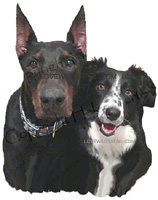This is a huge photo of one of my many hibiscus plants. This was a startling moment of an otherwise splendid day for me. I was looking outside when I saw this particular plant wilting noticeably. Startling because I water all of them everyday and sometimes twice a day.
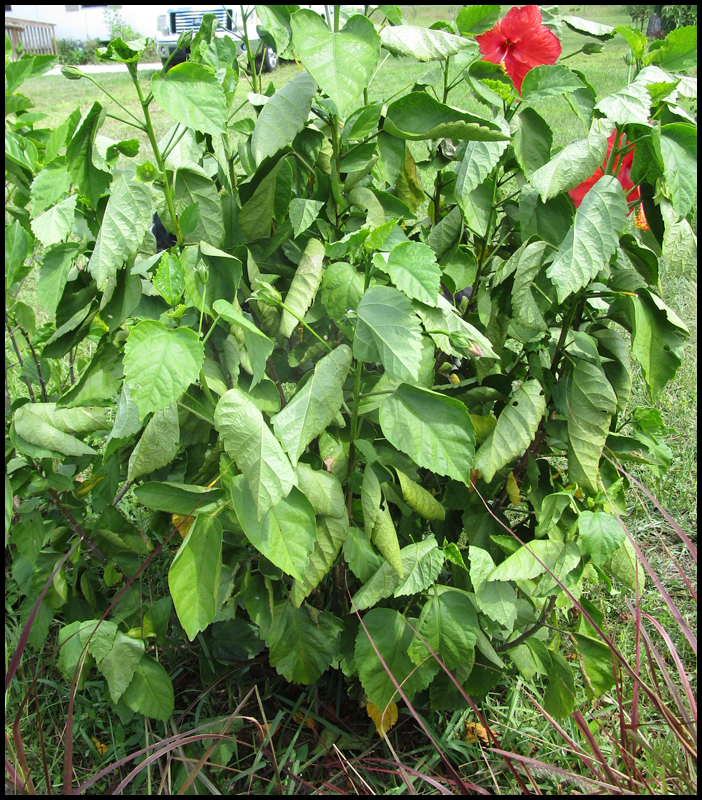
I got to work immediately and saturated the ground around this plant with water so it could drink from its roots up. The whole time I was wondering how come? Did I miss watering this one the day before? That would be pretty tough to do because there are plants all around it and I water methodially day after day and I’m not on a cell phone while I water. Perhaps this one just took the harsh afternoon soon harder this day. Whatever the case, I was able to see the results of dehydration and remedy the poor thing’s suffering before it was too late.
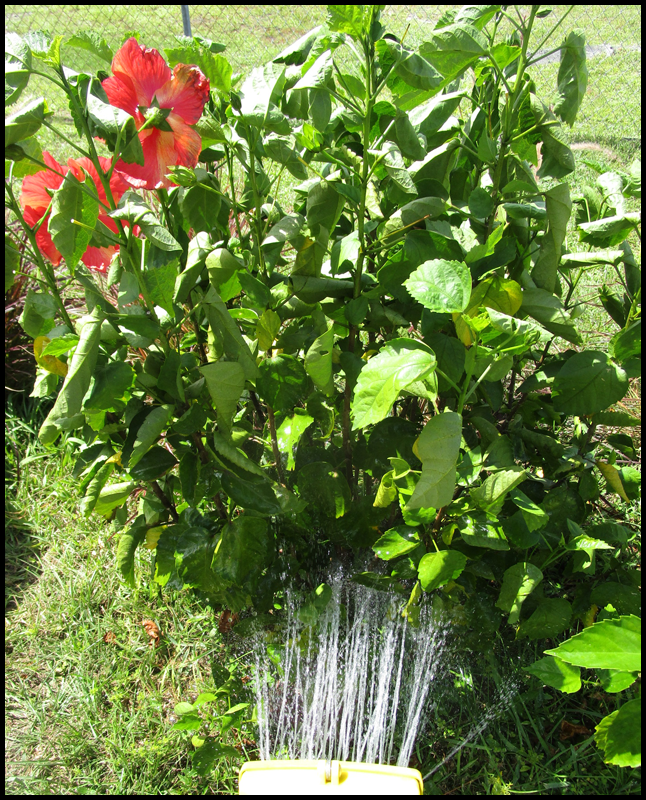
It didn’t take long, 20 minutes, for this plant to revive and feel better. How did I know? By looking at it! The leaves plumped and perked up and were no longer wilting. Water is a vital resource to all of us. By the time a plant is wilting, it’s in dire straights. So unless you hae a regular watering program, or even if you do have one like I do, you may not know your plant is suffering and in desperate need until it demonstrates via wilting and seemingly melting.
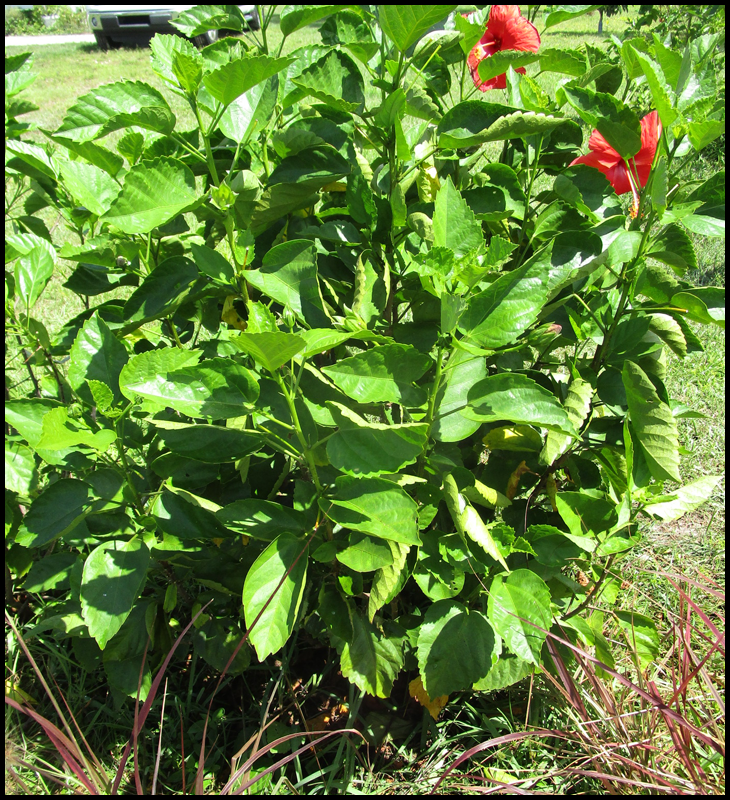
Fortunately for us animals, humans and dogs included, we have a physiological balance in our bodies called homeostasis. And if the balance is tilting towards the body needing hydration or fuel, we get thirsty or hungry to quench and satiate, so our bodies can function optimally, as they’re meant to be.
Animals need plenty of water for cell growth and regeneration. We need water for normal, day-to-day functioning. And when people cut off their dogs’ water, don’t have water available 24/7 for them, or parcel it out as if it were dessert, they’re impeding on their dogs own instinct to fill up and feed their cells when necessary. Unless your dog is diagnosed with a condition by a veterinarian requiring water limitation, then fresh water in pails, bowls, bottles, etc, should be available to your dog at all times. The water should be fresh and the containers should be cleaned with soap and water daily. Think to yourself, “Would I drink that water?”
One of the worst things to do while housetraining a puppy or dog is to manage water intake. If you leave it out all day, but cut it off in the evening, your dog could be going twelve or more hours without water! Then the pup or dog learns to hoard water when it is available. In turn, urinating doubles or triples, which makes housetraining more frustrating. Then water is withheld even more and the puppy ends up dehydrated while the owners think they’re doing the right thing. But that’s not housetraining. That’s managing an animal’s innate instincts to their detriment, and sometimes to the point where the dog or puppy loses touch with that thrist trigger that tells her when to drink; thereby leading to water hoarding because water has become such a scarce resource.
Letting your dog drink from the swimming pool is also dangerous. Would you drink a glass of swimming pool water day after day? Or ever? It’s not a drinking fountain for so many reasons: chemicals; insect remnants, urine, bacteria, and so on. Keep a bowl of water outside for your dog and check to refresh it regularly. Twice a day at the least.
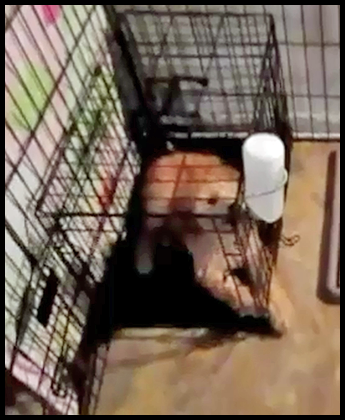 Finally, for puppies and dogs who are rambunctious in their crates or ex-pens, use a bottle. I had a client who was informed that dogs are incapable of getting enough water from a water bottle. That is untrue! Much like food toys, the water bottle makes a dog work a little harder to get the nourishment out, but it’s a way of using their natural mental energy and getting what they need simultaneously.
Finally, for puppies and dogs who are rambunctious in their crates or ex-pens, use a bottle. I had a client who was informed that dogs are incapable of getting enough water from a water bottle. That is untrue! Much like food toys, the water bottle makes a dog work a little harder to get the nourishment out, but it’s a way of using their natural mental energy and getting what they need simultaneously.
I suggest water bottles for dogs or puppies who are in crates or ex-pens during the housetraining process. I offer pails of water outside of their containment, in the house during free time, or outside when playing. But in crates and ex-pens, housetraining dogs and puppies are settling and can take time to use the water bottle because what else do they have to do? We want to keep our pups and dogs occupied with whatever interests them. Water bottles in crates keeps housetraining pups and dogs occupied much like the aforementioned food toys.
I’ve posted four links below if you are interested in purchasing one of the bottles I use, and also a bottle cleaning brush. If you are concerned about water dripping from the bottle, a good thing so the dog is attracted to it, then clamp a small, stainless steel water bowl beneath the bottle. Far enough beneath that it doesn’t interfere with your dog’s water licking. It’s used just to catch the drops. Often I find dogs lik the drops out, too.
Snap’y Fit hooked water bowl. Holds tightly!
Large dog or large puppy water bottle.
Enroll your dog or puppy in the Love Wags A Tail Housetraining 123 board-and-train program and we will get them going on a housebreaking boot camp program that will resolve issues that have been established, or start them out on the right paw towards housetraining success.
———-
Helen Verte Schwarzmann
Contact me
Certified in Training and Counseling
Certified Pet Dog Trainer-Knowledge Assessed
Certified Trick Dog Instructor
AKC STAR Puppy, CGC, and Trick Dog Trainer and Evaluator
Your Board-and-Train Dog Trainer for south and southwest Florida, Southwest Ranches, Plantation, Fort Lauderdale, Weston, Davie, Fort Myers, and Naples.
